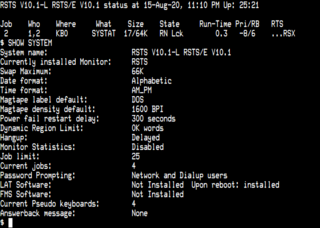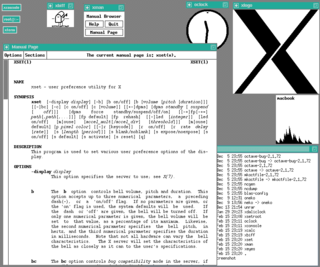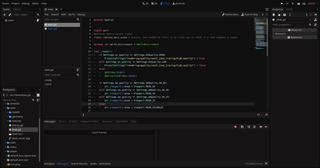| Operating system | Windows |
|---|---|
| Type | Liquid chromatography software |
| License | proprietary |
| Website | ChemStation on Agilent website |
Agilent ChemStation is a software package to control Agilent liquid chromatography, gas chromatography, and ultraviolet-visible spectroscopy systems such as the 1050, 1100 and 1200 Series HPLC system and the 8453 and 8454 single-beam diode array detector spectrophotometers. It is an evolution of the Hewlett-Packard ChemStation System.
Two versions are available: one ("online") in connection with the modules of the HPLC chain is designed to control instruments and run experiments, and the other ("offline"), without a connection with the HPLC chain, is designed to analyze data.
ChemStation is structured around a number of registers. Two of the more important registers are CHROMREG and CHROMRES, the chromatographic data registers. Other special registers exist for the UV-vis implementation of the software.
ChemStation has a command line interpreter and can run macros. Those macros are files grouping a set of commands. These files possess a .mac extension.
ChemStation can import analysis lists and export result files in XML by adding new lines to the ChemStation.ini configuration file. This is a feature to implement the connection with a Laboratory information management system (LIMS).

In computer programming, assembly language, often referred to simply as Assembly and commonly abbreviated as ASM or asm, is any low-level programming language with a very strong correspondence between the instructions in the language and the architecture's machine code instructions. Assembly language usually has one statement per machine instruction (1:1), but constants, comments, assembler directives, symbolic labels of, e.g., memory locations, registers, and macros are generally also supported.

In computer programming, a macro is a rule or pattern that specifies how a certain input should be mapped to a replacement output. Applying a macro to an input is known as macro expansion. The input and output may be a sequence of lexical tokens or characters, or a syntax tree. Character macros are supported in software applications to make it easy to invoke common command sequences. Token and tree macros are supported in some programming languages to enable code reuse or to extend the language, sometimes for domain-specific languages.

A text editor is a type of computer program that edits plain text. Such programs are sometimes known as "notepad" software. Text editors are provided with operating systems and software development packages, and can be used to change files such as configuration files, documentation files and programming language source code.
The File Transfer Protocol (FTP) is a standard communication protocol used for the transfer of computer files from a server to a client on a computer network. FTP is built on a client–server model architecture using separate control and data connections between the client and the server. FTP users may authenticate themselves with a clear-text sign-in protocol, normally in the form of a username and password, but can connect anonymously if the server is configured to allow it. For secure transmission that protects the username and password, and encrypts the content, FTP is often secured with SSL/TLS (FTPS) or replaced with SSH File Transfer Protocol (SFTP).

High-performance liquid chromatography (HPLC), formerly referred to as high-pressure liquid chromatography, is a technique in analytical chemistry used to separate, identify, and quantify each component in a mixture. It relies on pumps to pass a pressurized liquid solvent containing the sample mixture through a column filled with a solid adsorbent material. Each component in the sample interacts slightly differently with the adsorbent material, causing different flow rates for the different components and leading to the separation of the components as they flow out of the column.
UUCP is an acronym of Unix-to-Unix Copy. The term generally refers to a suite of computer programs and protocols allowing remote execution of commands and transfer of files, email and netnews between computers.
The Microsoft Windows Script Host (WSH) is an automation technology for Microsoft Windows operating systems that provides scripting abilities comparable to batch files, but with a wider range of supported features. This tool was first provided on Windows 95 after Build 950a on the installation discs as an optional installation configurable and installable by means of the Control Panel, and then a standard component of Windows 98 and subsequent and Windows NT 4.0 Build 1381 and by means of Service Pack 4. The WSH is also a means of automation for Internet Explorer via the installed WSH engines from IE Version 3.0 onwards; at this time VBScript became means of automation for Microsoft Outlook 97. The WSH is also an optional install provided with a VBScript and JScript engine for Windows CE 3.0 and following and some third-party engines including Rexx and other forms of Basic are also available.

RSTS is a multi-user time-sharing operating system developed by Digital Equipment Corporation for the PDP-11 series of 16-bit minicomputers. The first version of RSTS was implemented in 1970 by DEC software engineers that developed the TSS-8 time-sharing operating system for the PDP-8. The last version of RSTS was released in September 1992. RSTS-11 and RSTS/E are usually referred to just as "RSTS" and this article will generally use the shorter form. RSTS-11 supports the BASIC programming language, an extended version called BASIC-PLUS, developed under contract by Evans Griffiths & Hart of Boston. Starting with RSTS/E version 5B, DEC added support for additional programming languages by emulating the execution environment of the RT-11 and RSX-11 operating systems.
JTAG is an industry standard for verifying designs and testing printed circuit boards after manufacture.
Utility software is a program specifically designed to help manage and tune system or application software. It is used to support the computer infrastructure - in contrast to application software, which is aimed at directly performing tasks that benefit ordinary users. However, utilities often form part of the application systems. For example, a batch job may run user-written code to update a database and may then include a step that runs a utility to back up the database, or a job may run a utility to compress a disk before copying files..
The MCP is the operating system of the Burroughs B5000/B5500/B5700 and the B6500 and successors, including the Unisys Clearpath/MCP systems.
Stratus VOS is a proprietary operating system running on Stratus Technologies fault-tolerant computer systems. VOS is available on Stratus's ftServer and Continuum platforms. VOS customers use it to support high-volume transaction processing applications which require continuous availability. VOS is notable for being one of the few operating systems which run on fully lockstepped hardware.
ARexx is an implementation of the Rexx language for the Amiga, written in 1987 by William S. Hawes, with a number of Amiga-specific features beyond standard REXX facilities. Like most REXX implementations, ARexx is an interpreted language. Programs written for ARexx are called "scripts", or "macros"; several programs offer the ability to run ARexx scripts in their main interface as macros.

In computing, a shell is a computer program that exposes an operating system's services to a human user or other programs. In general, operating system shells use either a command-line interface (CLI) or graphical user interface (GUI), depending on a computer's role and particular operation. It is named a shell because it is the outermost layer around the operating system.
In computer architecture, a transport triggered architecture (TTA) is a kind of processor design in which programs directly control the internal transport buses of a processor. Computation happens as a side effect of data transports: writing data into a triggering port of a functional unit triggers the functional unit to start a computation. This is similar to what happens in a systolic array. Due to its modular structure, TTA is an ideal processor template for application-specific instruction set processors (ASIP) with customized datapath but without the inflexibility and design cost of fixed function hardware accelerators.
System Modification Program/Extended (SMP/E), the proprietary version of System Modification Program (SMP), "is a tool designed to manage the installation of software products on [a] z/OS system and to track the modifications" to those products.
Chromatography software is software that collects and analyzes chromatographic results delivered by chromatography detectors.
Emacs, originally named EMACS, is a family of text editors that are characterized by their extensibility. The manual for the most widely used variant, GNU Emacs, describes it as "the extensible, customizable, self-documenting, real-time display editor". Development of the first Emacs began in the mid-1970s, and work on its direct descendant, GNU Emacs, continues actively; the latest version is 28.2, released in September 2022.

A scripting language or script language is a programming language that is used to manipulate, customize, and automate the facilities of an existing system. Scripting languages are usually interpreted at runtime rather than compiled.

OpenChrom is an open source software for the analysis and visualization of mass spectrometric and chromatographic data. Its focus is to handle native data files from several mass spectrometry systems, vendors like Agilent Technologies, Varian, Shimadzu, Thermo Fisher, PerkinElmer and others. But also data formats from other detector types are supported recently.